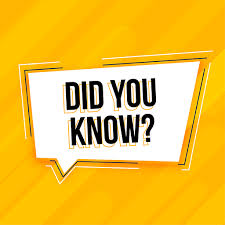
simply amazing, always for you.
Chickens, like other birds, reproduce through internal fertilization, where eggs are produced inside the hen’s body. Here’s a step-by-step explanation of the reproductive system of a chicken:

1. Ovaries
- Female chickens have two ovaries, but usually, only the left one is functional. The ovary contains thousands of tiny, undeveloped eggs, called ova (singular: ovum).
- When a hen reaches sexual maturity (typically around 5-6 months of age), her body begins to produce one ovum (egg yolk) roughly every 24-26 hours.
2. Oviduct
- After the ovum (yolk) is released from the ovary, it enters the oviduct, a long, coiled tube where the egg will be formed and developed.
- The oviduct is divided into several regions:
- Infundibulum: The first section of the oviduct where the yolk is caught after it is released from the ovary. If the hen has mated with a rooster, sperm may be stored here for future fertilization.
- Magnum: In this part, the egg yolk is coated with albumen (egg white). This process takes several hours.
- Isthmus: The egg gets its shell membranes here, which are two thin layers that surround the developing egg.
- Uterus (Shell Gland): The egg spends the final hours of its journey in the uterus, where it is coated with calcium carbonate, forming the hard eggshell. The shell can take about 20 hours to form.
- Vagina: The egg moves through the vagina before it is laid. The egg is then laid through the cloaca, which is the shared opening for both excretion and reproduction in chickens.
3. Fertilization
- If the hen has mated with a rooster, fertilization can happen in the infundibulum section of the oviduct. Sperm from the rooster can live in the hen’s reproductive tract for several weeks, allowing her to produce fertilized eggs even if she hasn’t mated recently.
- If there is no fertilization, the egg yolk will still be laid, but it will be unfertilized and unable to develop into a chick.
4. Laying the Egg
- After the egg has formed, it passes through the vagina and is laid through the cloaca, the common exit for the digestive and reproductive systems.
- The laying process is typically triggered by daylight, hormonal changes, and the bird’s environment. Hens usually lay one egg per day, though this can vary.
Key Points:
- The egg yolk is produced in the ovary.
- The albumen (egg white) and shell are formed in the oviduct.
- A fertilized egg (if mating occurs) can develop into a chick, while an unfertilized egg is what we typically eat.
- The egg-laying cycle takes around 24-26 hours for each egg to be produced and laid.
This entire process is controlled by hormones that regulate the hen’s reproductive system. Once a hen starts laying eggs, she can continue laying regularly, especially under the right conditions, such as proper nutrition, light exposure, and a comfortable environment.

Support Our Website!
We appreciate your visit and hope you find our content valuable. If you’d like to support us further, please consider contributing through the TILL NUMBER: 9549825. Your support helps us keep delivering great content!
If you’d like to support Nabado from outside Kenya, we invite you to send your contributions through trusted third-party services such as Remitly, SendWave, or WorldRemit. These platforms are reliable and convenient for international money transfers.
Please use the following details when sending your support:
Phone Number: +254701838999
Recipient Name: Peterson Getuma Okemwa
We sincerely appreciate your generosity and support. Thank you for being part of this journey!

I delight in, cause I discovered just what I used to be having a look for.
You have ended my four day lengthy hunt! God Bless
you man. Have a nice day. Bye
I really enjoyed reading this article—it’s both
engaging and full of valuable insights. The website is
a fantastic source of information.